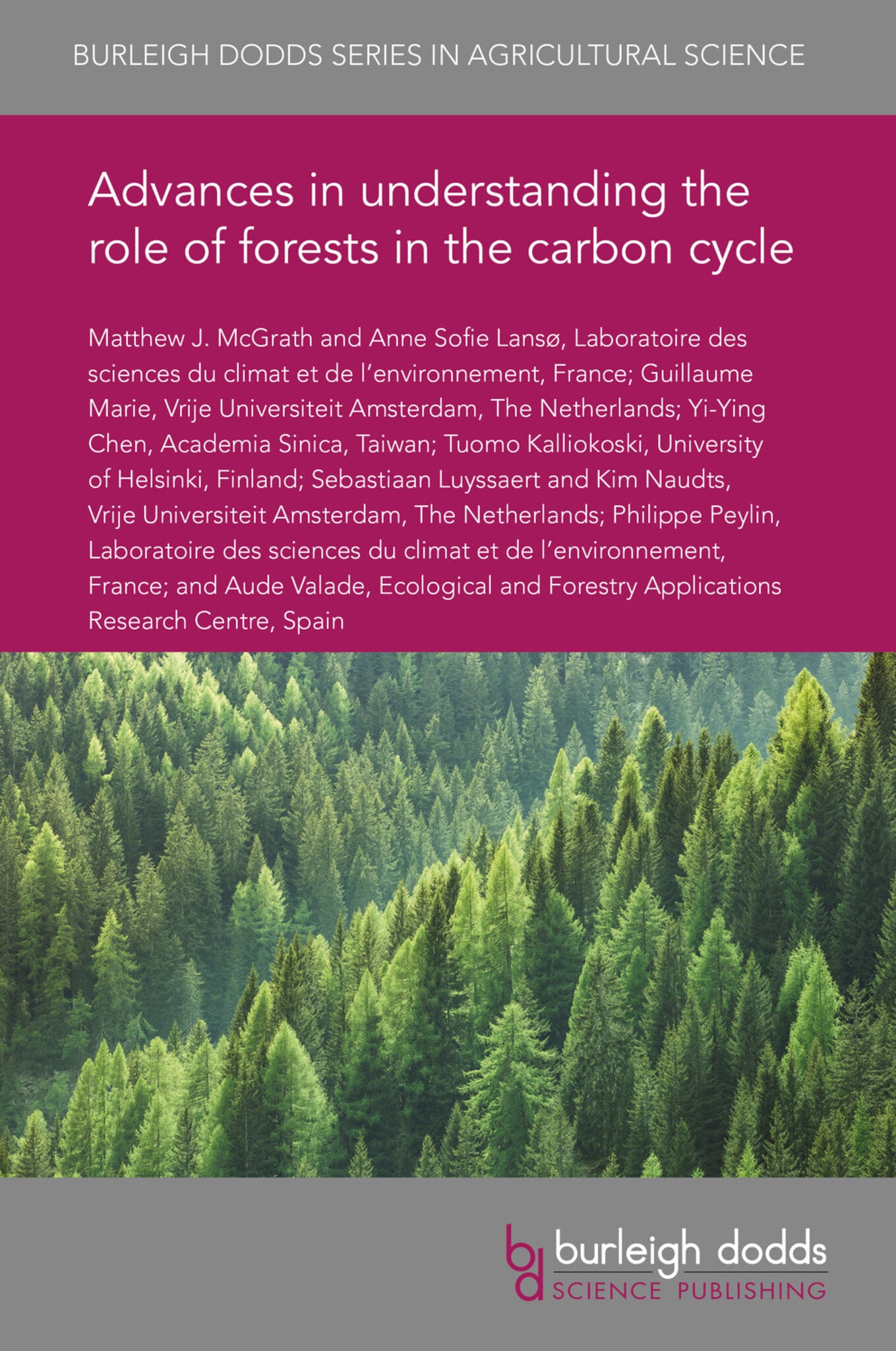We're sorry. An error has occurred
Please cancel or retry.
Advances in understanding the role of forests in the carbon cycle
Dr matthew j. mcgrath,
Dr anne sofie lansø,
Dr guillaume marie,
Dr yi-ying chen,
Dr tuomo kalliokoski,
View More
Dr sebastiaan luyssaert,
Dr kim naudts,
Dr philippe peylin,
Dr aude valade
Regular price
£25.00
Sale price
£25.00
Regular price
£0.00
Unit price
/
per
Sale
Sold out
Re-stocking soon
The recognition that increased levels of atmospheric carbon dioxide are warming the global climate has led to forests being viewed as potential natural ways to reduce carbon dioxide concentrations ...
Read More

Some error occured while loading the Quick View. Please close the Quick View and try reloading the page.
Couldn't load pickup availability
- Format:
-
25 November 2019

The recognition that increased levels of atmospheric carbon dioxide are warming the global climate has led to forests being viewed as potential natural ways to reduce carbon dioxide concentrations in the atmosphere. Forests’ complex interactions with local and global climates, however, make predicting the impacts of changes in forest cover and composition challenging. This chapter examines the importance of forest carbon content and methods of monitoring it. The chapter describes the mechanisms driving forest carbon storage and explores whether forests should be considered sources or sinks of carbon. The chapter distinguishes between carbon management and climate management. Finally, the chapter looks ahead to future research trends in this area and offers suggestions for further reading.

Price: £25.00
Publisher: Burleigh Dodds Science Publishing
Imprint: Burleigh Dodds Science Publishing
Series: Burleigh Dodds Series in Agricultural Science
Publication Date:
25 November 2019
ISBN: 9781786764959
Format: eBook
BISACs:
TECHNOLOGY & ENGINEERING / Agriculture / Forestry, Forestry and silviculture, TECHNOLOGY & ENGINEERING / Agriculture / Sustainable Agriculture, Forests and woodland, Boreal, coniferous forest, Sustainable agriculture

- 1 Introduction
- 2 The importance of forest carbon content
- 3 Monitoring forest carbon
- 4 Mechanisms driving forest carbon storage
- 5 Are forests sources or sinks of carbon?
- 6 Carbon management as distinct from climate management
- 7 Future trends and conclusion
- 8 Acknowledgements
- 9 Where to look for further information
- 10 References



